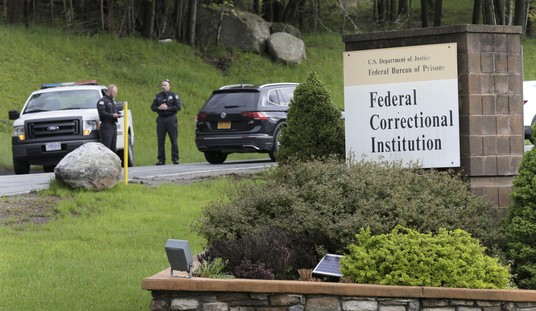Laredo, Texas — "Did you see the guy in the white shirt recording us?" U.S. Customs and Border Patrol (CBP) agent Gregorio Madrigal asked me after we had finished touring the Rio Grande River on an airboat. I had. I also noticed "white shirt man" was not alone on the Mexican side of the river.
"White shirt man" was recording our landing on the U.S. side of the river with his cell phone. "Those are cartel scouts," Madrigal said, adding CBP's intelligence unit estimates there are around 1,500 scouts for the cartel in the area around Laredo and neighboring Nuevo Laredo.
Townhall was given a tour of the Laredo Sector (LS) by CBP, showing how it manages to guard America’s border without any major physical barriers that extend past the ports of entry. This was a noticeable difference from the San Diego Sector, where CBP has two newly built walls in the urban areas, and the El Paso Sector, where there's at least one wall that borders Ciudad Juárez and beyond.
The only physical barrier that CBP has in Laredo is the Rio Grande River, which stretches along all 171 miles of its sector. But even then, people attempting to cross the border can easily use it to their advantage since CBP cannot apprehend them until they hit land or if they are in danger of drowning.

(Suspected cartel scouts on the Mexican side of the Rio Grande River.)
Recommended
Since the LS does not have a border wall, CBP uses the technology and agents it has on hand to their maximum effectiveness in trying to stem border crossers. While the other sectors were overwhelmed by the migrant caravans last year, the LS was mostly spared from having to directly handle those migrants because the cartel controls who crosses from its side of the river.
“You can't cross the river without them knowing. With that said, they control what goes up north,” Assistant Chief Patrol Agent Casey Adams said. Portions of the caravan were originally going to attempt to enter the U.S. in the LS but diverted to other areas after being informed, and threatened, by the cartel they would not be able to cross without paying them a hefty fee.
Similar to what I had heard from agents in other sectors, those in the LS said they understand a wall is not going to stop border crossings completely, but they know it can be very useful in stopping a large number of them.
“You have to put yourself in the eyes of the agent. Anything we can do to assist them in doing their job better, safer, and more effectively, yeah…we need infrastructure, we need technology, and we need manpower,” Adams said.
The LS is in the process of getting a wall of some kind in its area of operations, but as with a lot of issues that deal with the environment, immigration, and international borders, it takes time. That does not mean the CBP agents are just standing by idly.
Since the ecosystem of the riverbanks is mostly unburdened with the impact of humans, smugglers use the terrain to their advantage. Thick, tall grass, as high as 8-12 feet in some areas, is a common feature all along the border. This presents a challenge to CBP agents because even if they see people coming across, via their many video cameras, they lose people in the foliage, who easily disappear in the nearby neighborhoods or waiting vehicles.
After years of lobbying the city, CBP was recently allowed to cut down the grass in some previously high traffic areas, drastically cutting down narcotics and human smuggling traffic. In some places, the now cut grass area is as wide as a football field.
“They would just wait in here until nightfall and then go into the neighborhood and disappear,” Madrigal explained.
The area where the grass grew unimpeded now has multiple CBP and U.S. military vehicles and personnel guarding right up to the river. Lights and mobile towers also now dot the riverbank.

(The entire area was previously covered in tall grass that border crossers took advantage of.)
In other parts of the riverbank where the grass stands tall, tunnels are made from the constant traffic. One of the tunnels we toured looked what American troops in Vietnam could have encountered on their patrols in the jungle.

(Grass tunnel that leads away from the Rio Grande River, which is just yards away.)
CBP in the LS also has to deal with the security threats of cartel violence that occurs in neighboring Nuevo Laredo, Mexico. In recent days, Nuevo Laredo has experienced a rash of cartel violence. The Laredo Morning Times reported cartel members set vehicles on fire and blocked main roads in the city and carried out multiple shootings.
The few areas that have some type of fencing are private homes or businesses that were put by the owners. Laredo Community College, which is in easy walking distance from the Rio Grande, recently installed a fence on campus. Prior to the fence installment, Madrigal said the college dealt with border crossers and drug runners constantly walking through campus, but that it now has very little foot traffic, if any, after the college erected the fence.



